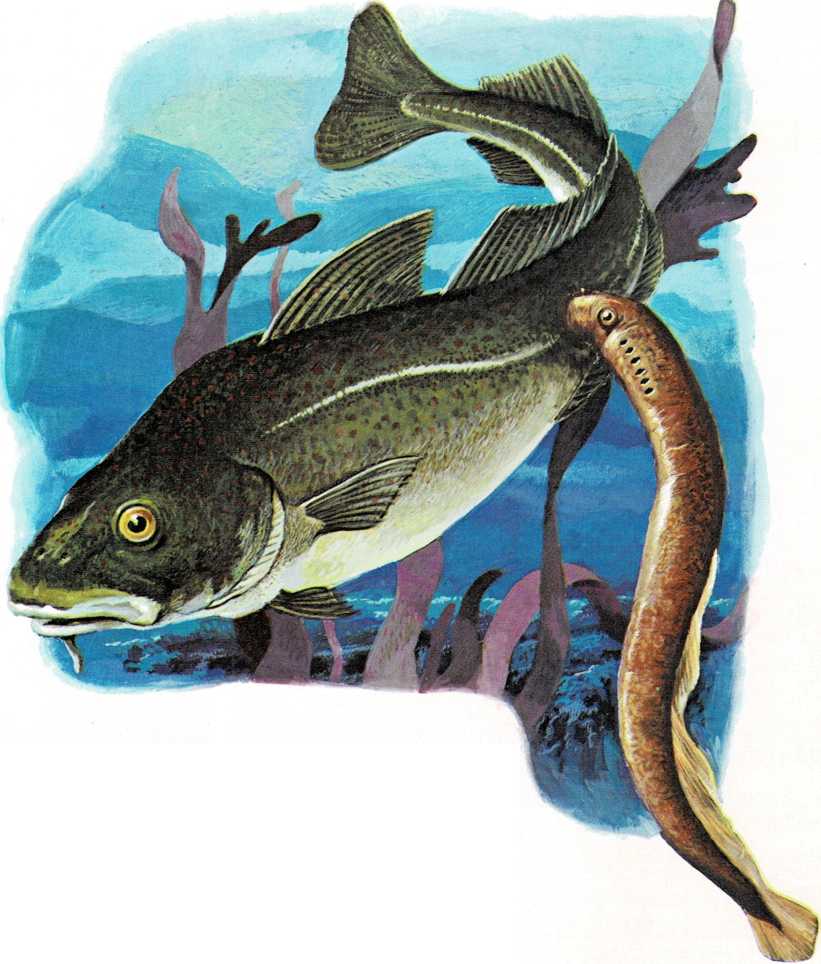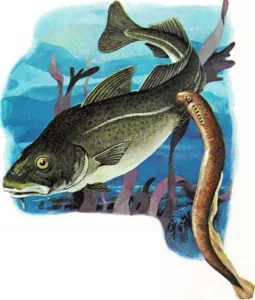
Vampire fish!
An olive-green codfish, freckled with brown spots, moved slowly
through the water. It was hungry, and ready to snap up almost any
smaller creature it might meet. But this was an unlucky day for the
codfish—it was about to become the prey of a vampire fish!A brownish, snakelike shape suddenly darted at the cod. A round mouth,
like the rubber suction cup on a toy arrow, fastened onto the cod’s
side. Tiny, sharp teeth all around the inside of the snaky creature’s
mouth dug into the codfish’s flesh.The codfish twisted and turned and tried to escape. But it was doomed!
For now the vampire fish went to work. Its tongue, covered with little
teeth, began to saw into the codfish’s skin. Blood began to flow—and
the vampire fish began to feed. It would stay attached to the codfish
for several more days, until the cod finally died from loss of blood.The \”vampire fish” is really a creature called a lamprey
[(lam]{.smallcaps} pree). A sea lamprey has a snaky body as much as
three feet (1

lamprey preying on codfish
meter) long, and a smooth skin without scales. And it has no jaws—just
a round, cuplike mouth with which it sucks blood.
The lamprey has a close cousin that’s called a hagfish. It’s an even
nastier customer than the lamprey. A hagfish looks more like a big worm
than like a fish. It has no jaws. It gets its food by boring into the
bodies of dead or dying fish with its toothed tongue. It then rasps away
with its tongue until nothing is left of the fish but skin and bones!
Actually, lampreys and hagfishes are not Awe fish. These \”vampire fish”
are descendants of jawless animals that lived in the sea hundreds of
millions of years ago, before there were any true fish with jaws and
scales.

